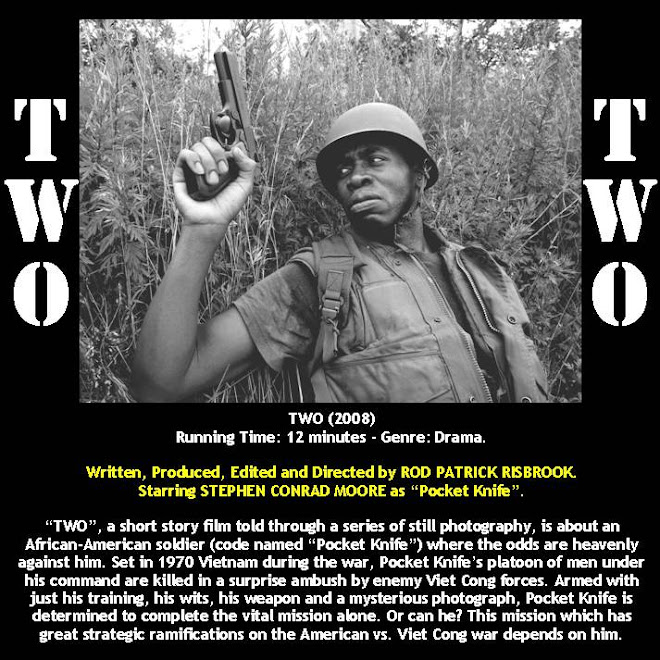 Ligon uses obscured text by James Baldwin,
Ligon uses obscured text by James Baldwin,Gertrude Stein and Richard Pryor.
(Christina House / For The Times)

Glenn Ligon Gets Obama's Vote
The youngest artist chosen to grace the walls of the White House, the 49-year-old Conceptual painter has a show opening in L.A.
By Hunter Drohojowska-Philp
December 11, 2009
Compared to the conservative choices of previous administrations, the art that the Obamas selected for the walls of the White House living quarters was mostly contemporary art by mostly living artists. Among them was New York-based Glenn Ligon, who, at 49, was the youngest artist to have his work chosen.
The news took a while to reach Ligon.
"No one called me so when I heard about it, I thought it might be a rumor," he said Wednesday, as he helped install his work for a show at Regen Projects in West Hollywood that opens Saturday. "Then I saw my work in a list of images in Smithsonian Magazine."
The 49-year-old Conceptual painter considers it an honor, and, he says, "I'm glad to think it is in the living quarters, to be where they sleep, eat dinner, where they will be able to see it. That part, I was thrilled about."
Ligon, who is African American, is known for texts stenciled in paint on canvas. The text in the 1992 painting selected by the Obamas is from John Howard Griffin's 1961 memoir "Black Like Me," the account of a white man's experiences traveling through the South after he had his skin artificially darkened.
The words "All traces of the Griffin I had been were wiped from existence" are repeated in capital letters that progressively overlap until they coalesce as a field of black paint. The picture belongs to the Hirshhorn Museum, a branch of the Smithsonian Institution, which loans art to the White House.
Thelma Golden, director of the Studio Museum in Harlem, N.Y., has organized many exhibitions that have included Ligon's art.
"I think Glenn Ligon is one of the most important artists working today," she said. "In his work, I am constantly amazed and inspired by his ability to operate on the level of deep thought and real feeling."
Ligon, who will have a retrospective at the Whitney Museum of American Art in 2011, is exhibiting his most recent art at Regen on the occasion of the gallery's 20th anniversary.
"We started with Lawrence Weiner, a pioneer artist in terms of using language, and 20 years later we show Glenn, who uses language and considers the history of art and what has come before him," said proprietor Shaun Caley Regen.
In the gallery's large warehouse space, Ligon stared silently at the 22 canvases propped on foam blocks against the walls. Most are black text on white, black or silver backgrounds, though five might be considered accents, one each in pink, yellow, blue, red and brown.
The text, silkscreened in coal dust, shimmers like tiny black diamonds. The artist, head shaved, wearing large, brown-rimmed glasses, a crisp white shirt, jeans and immaculate white sneakers, shakes his head slowly trying to decide why the current arrangement is "off."
Nothing looked off to a visitor apart from the fact that the text is completely illegible.
For this show, Ligon used text borrowed from James Baldwin's essay "Stranger in the Village" but coal dust obscures the words.
The experiences of the black gay author and his lover in a remote Swiss village in the 1950s struck such a chord with Ligon, who is also gay, that he has used the text repeatedly.
In this case, he made a silkscreen of an earlier painting and used a thick black etching ink to screen the text onto the canvases. In the process, the letters disintegrated and wide swathes of scraped clean space emerged. The coal dust, which he calls a "leftover material that adds value," was applied in a thick layer to the letters so words could not be deciphered.
Ligon sighs. "I guess I've gone back to being an abstract painter."
The exhibition is titled "Off Book," referring to the point when an actor has learned his lines and is free to improvise. "That is just where I'm at right now," Ligon adds.
His recently completed short film based on Thomas Edison's 1903 silent film "Uncle Tom's Cabin" is on view in the adjacent gallery.
Playing the character of Tom, Ligon had himself filmed re-creating the last scene of Edison's movie, which also provided his film's title: "The Death of Tom."
But the film was incorrectly loaded in the hand-crank camera that the artist used so no imagery appeared on film. Embracing this apparent failure, Ligon decided to show his film as an abstract progression of lights and darks with a narrative suggested by the score composed and played by jazz musician Jason Moran.
The notion of being an outsider, common among artists, is a recurrent theme in Ligon's art and an emotion he has felt since the age of 7, when his divorced, working-class parents in the Bronx, N.Y., got a scholarship for him and his brother to attend Walden, a now-defunct progressive private school on Manhattan's Upper West Side.
Ligon received an education in the arts as well as in the limits of social integration.
In a 2001 interview for a studio museum catalog, he told the New Yorker's Hilton Als, "I was curious about [Baldwin's] discussion of the outsider because that's what I experienced going to high school, going to college, and being in these various kinds of spaces where . . . I was the only one, the only black kid in the first grade class who was commuting an hour and a half to get to school."
After graduating with an art degree from Wesleyan University in 1982, he worked as a proof-reader for a law firm, while in his spare time he painted in the abstract Expressionist style of his heroes Willem de Kooning and Jackson Pollock.
In 1985, he was accepted into the Whitney Museum Independent Study Program, where he read intensively on critical theory, and it changed his perspective. "It presented other possibilities." He says he made a commitment "to be an artist, not just to make art."
"I started using the words I was reading as painting," he says. He has quoted from Jean Genet, Gertrude Stein, Zora Neale Hurston and Richard Pryor. How does he choose? "I think they choose me," he says. "If something sticks with me for a long time, it goes into a painting."
Ligon follows artists like Jasper Johns and Ed Ruscha in the use of language, but he wants his paintings to defy easy reading. "In writing, something is always left out, it can't be articulated in the space of an essay. Using letters that bleed and disappear is about getting to that difficulty. The reader has to struggle to read in the same way that Baldwin had to struggle to write."
A sentence or phrase will be written repeatedly until it disappears or becomes illegible. Some are written in black on black. The intentional obfuscation is one aspect of his refusal to be categorized as a manifestation of black culture. "There is an imagined thing called black culture," he says. "But culture is a construction. It is learned behavior, not innate. The black American experience is the American experience."
To that end, he has created neon signs of the word "America." The one in this show faces the wall to be read in reverse.
Despite considerable attention because his work was selected by the Obamas, Ligon does not consider himself a political artist. With a slight smile, he says, "I make art to figure out what I'm thinking, not to tell people what I think."
The news took a while to reach Ligon.
"No one called me so when I heard about it, I thought it might be a rumor," he said Wednesday, as he helped install his work for a show at Regen Projects in West Hollywood that opens Saturday. "Then I saw my work in a list of images in Smithsonian Magazine."
The 49-year-old Conceptual painter considers it an honor, and, he says, "I'm glad to think it is in the living quarters, to be where they sleep, eat dinner, where they will be able to see it. That part, I was thrilled about."
Ligon, who is African American, is known for texts stenciled in paint on canvas. The text in the 1992 painting selected by the Obamas is from John Howard Griffin's 1961 memoir "Black Like Me," the account of a white man's experiences traveling through the South after he had his skin artificially darkened.
The words "All traces of the Griffin I had been were wiped from existence" are repeated in capital letters that progressively overlap until they coalesce as a field of black paint. The picture belongs to the Hirshhorn Museum, a branch of the Smithsonian Institution, which loans art to the White House.
Thelma Golden, director of the Studio Museum in Harlem, N.Y., has organized many exhibitions that have included Ligon's art.
"I think Glenn Ligon is one of the most important artists working today," she said. "In his work, I am constantly amazed and inspired by his ability to operate on the level of deep thought and real feeling."
Ligon, who will have a retrospective at the Whitney Museum of American Art in 2011, is exhibiting his most recent art at Regen on the occasion of the gallery's 20th anniversary.
"We started with Lawrence Weiner, a pioneer artist in terms of using language, and 20 years later we show Glenn, who uses language and considers the history of art and what has come before him," said proprietor Shaun Caley Regen.
In the gallery's large warehouse space, Ligon stared silently at the 22 canvases propped on foam blocks against the walls. Most are black text on white, black or silver backgrounds, though five might be considered accents, one each in pink, yellow, blue, red and brown.
The text, silkscreened in coal dust, shimmers like tiny black diamonds. The artist, head shaved, wearing large, brown-rimmed glasses, a crisp white shirt, jeans and immaculate white sneakers, shakes his head slowly trying to decide why the current arrangement is "off."
Nothing looked off to a visitor apart from the fact that the text is completely illegible.
For this show, Ligon used text borrowed from James Baldwin's essay "Stranger in the Village" but coal dust obscures the words.
The experiences of the black gay author and his lover in a remote Swiss village in the 1950s struck such a chord with Ligon, who is also gay, that he has used the text repeatedly.
In this case, he made a silkscreen of an earlier painting and used a thick black etching ink to screen the text onto the canvases. In the process, the letters disintegrated and wide swathes of scraped clean space emerged. The coal dust, which he calls a "leftover material that adds value," was applied in a thick layer to the letters so words could not be deciphered.
Ligon sighs. "I guess I've gone back to being an abstract painter."
The exhibition is titled "Off Book," referring to the point when an actor has learned his lines and is free to improvise. "That is just where I'm at right now," Ligon adds.
His recently completed short film based on Thomas Edison's 1903 silent film "Uncle Tom's Cabin" is on view in the adjacent gallery.
Playing the character of Tom, Ligon had himself filmed re-creating the last scene of Edison's movie, which also provided his film's title: "The Death of Tom."
But the film was incorrectly loaded in the hand-crank camera that the artist used so no imagery appeared on film. Embracing this apparent failure, Ligon decided to show his film as an abstract progression of lights and darks with a narrative suggested by the score composed and played by jazz musician Jason Moran.
The notion of being an outsider, common among artists, is a recurrent theme in Ligon's art and an emotion he has felt since the age of 7, when his divorced, working-class parents in the Bronx, N.Y., got a scholarship for him and his brother to attend Walden, a now-defunct progressive private school on Manhattan's Upper West Side.
Ligon received an education in the arts as well as in the limits of social integration.
In a 2001 interview for a studio museum catalog, he told the New Yorker's Hilton Als, "I was curious about [Baldwin's] discussion of the outsider because that's what I experienced going to high school, going to college, and being in these various kinds of spaces where . . . I was the only one, the only black kid in the first grade class who was commuting an hour and a half to get to school."
After graduating with an art degree from Wesleyan University in 1982, he worked as a proof-reader for a law firm, while in his spare time he painted in the abstract Expressionist style of his heroes Willem de Kooning and Jackson Pollock.
In 1985, he was accepted into the Whitney Museum Independent Study Program, where he read intensively on critical theory, and it changed his perspective. "It presented other possibilities." He says he made a commitment "to be an artist, not just to make art."
"I started using the words I was reading as painting," he says. He has quoted from Jean Genet, Gertrude Stein, Zora Neale Hurston and Richard Pryor. How does he choose? "I think they choose me," he says. "If something sticks with me for a long time, it goes into a painting."
Ligon follows artists like Jasper Johns and Ed Ruscha in the use of language, but he wants his paintings to defy easy reading. "In writing, something is always left out, it can't be articulated in the space of an essay. Using letters that bleed and disappear is about getting to that difficulty. The reader has to struggle to read in the same way that Baldwin had to struggle to write."
A sentence or phrase will be written repeatedly until it disappears or becomes illegible. Some are written in black on black. The intentional obfuscation is one aspect of his refusal to be categorized as a manifestation of black culture. "There is an imagined thing called black culture," he says. "But culture is a construction. It is learned behavior, not innate. The black American experience is the American experience."
To that end, he has created neon signs of the word "America." The one in this show faces the wall to be read in reverse.
Despite considerable attention because his work was selected by the Obamas, Ligon does not consider himself a political artist. With a slight smile, he says, "I make art to figure out what I'm thinking, not to tell people what I think."




+LR+Edit+32.jpg)


.jpg)


























.jpg)



